Interview with Chris Smith, President of Cochlear Americas, and Jace Wolfe, Director of Audiology at Hearts for Hearing
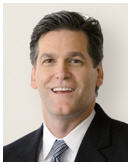
Chris Smith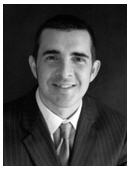
Jace Wolfe
CAROLYN SMAKA: This is Carolyn Smaka from Audiology Online, and today I have the opportunity to speak with Chris Smith and Jace Wolfe about exciting new developments from Cochlear Americas. Jace, Chris, thanks for joining me today.
CHRIS SMITH: Thanks for having us.
JACE WOLFE: Thanks, Carolyn.
SMAKA: Can you first tell me a little bit about yourselves and what you both do?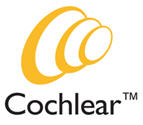
SMITH: Thanks, Carolyn. It's good to be here. I'm President of Cochlear Americas, and I've been with the company for about five and a half years. I think most people are familiar with Cochlear Americas, but today we have the opportunity to talk specifically about our Nucleus® 5 system and our ability to provide this new technology to recipients who have been wearing a Nucleus Freedom™ implant.
WOLFE: Hi Carolyn. I'm the Director of Audiology at Hearts for Hearing in Oklahoma City, Oklahoma. I've been in this position for about seven years. I spend about 50 percent of my time seeing patients clinically and then about 50 percent of my time doing clinical research, primarily with cochlear implants and projects that pertain to pediatric audiology. I also teach courses in the Au.D. program at the University of Oklahoma.
SMAKA: Great. Thank you. Chris, you hinted a bit about our topic today, Nucleus 5. What are benefits for recipients who upgrade from, say a Nucleus Freedom to Nucleus 5?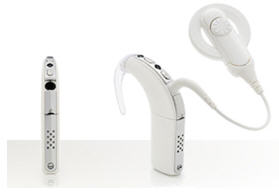
Cochlear™ Nucleus® CP810 Sound Processor
SMITH: That's a great question, Carolyn. As with all technology, the benefit will vary depending on each individual. The Nucleus 5 has 50 new innovations that really advance the technology forward from our last generation Freedom product.
There are many, many significant benefits with Nucleus 5. The main benefit that jumps ahead of everything is hearing performance. We've seen a significant improvement in hearing performance with the Nucleus 5, especially in tough listening situations and in noise. That has been one of the benchmarks of the product. Nucleus 5 takes the water-resistance feature to the next level. Soon our rechargeable batteries will be available as they are currently under FDA review. When they become available, Nucleus 5 will actually be a submergible sound processor. It is also smaller, and lighter than previous processors.
From a parent's perspective, one of the things we've found that they like the most about the product is the remote assistant. You have the ability, in a handheld device, to be able to change your own or your child's sensitivity, volume, or program settings. There's also a diagnostics tool built into the wireless remote so you're able to tell how the system is working. That's a new innovation in the industry.
We could spend this entire interview just talking about the remote assistant! But really, there have been a number of new innovations with Nucleus 5 that have kind of leapfrogged above existing technology currently on the market.
WOLFE: I would definitely echo what Chris just said. I've worked with almost every sound processor that's been available since cochlear implants were introduced 27 years ago. And as a clinician, my professional opinion is that Nucleus 5 is by far the best and most sophisticated sound processor on the market today. It's also the first truly 21st-century processor available today - considering changes in both the design of the processor to make it more durable, and also in the technology.
Like Chris said, Nucleus 5 is submergible with the rechargeable battery. That means, you can actually leave it in water for 30 minutes, pull it out, and it still works. In real-world situations - whether it's a small child putting it in his mouth or someone playing sports - that's a really big deal!
With the rechargeable battery, Nucleus 5 is submergible for up to 30 minutes
At Hearts for Hearing, we have about 50 patients who we've upgraded to the Nucleus 5 processor, and some of those are bilateral users. So we have about 70 ears total using it. Upgrading to a new processor is a really emotional process for patients, because they're severely or profoundly deaf without the use of that device. Without their cochlear implant, they can't hear anything, and that sound processor is their link to communication for social settings, friends or family, work, school, whatever it might be.
So there's a lot of anxiety when you're going to change that link or change their sound processor. In the past, it's taken people several days to adjust to the sound quality of a new processor. As soon as we turn on this processor, the older children and adults that can tell us how it sounds, immediately say, "Oh, wow, that's so crisp. That's so clear." We've even had patients that have even said, "This is the closest my hearing has been to my natural hearing, before I lost my hearing, and better than when I wore hearing aids." Those comments have made big impressions on me.
There are so many great things that Nucleus 5 offers patients, it's hard to know where to start.
SMITH: Carolyn, I think Jace brings up a good point about the importance of patients upgrading processors. There are well over 130,000 recipients around the world and some of those people were implanted 25 or 27 years ago. Now, Nucleus 5 is available for recipients of the Nucleus Freedom implant, however new technology will eventually be available to all Nucleus recipients regardless of when they were implants.
One of our challenges right now is that everybody wants it, and I wish we could offer it today to everybody!
We want to make sure that all or our recipients know how seriously we take our lifetime commitment and that our recipients will not be left behind. For those Freedom patients who were recently implanted and they're concerned about the cost to upgrade, there is a trade-in program as well as financing program that may help We really are trying to make it as easy as possible to access this technology.
This upgrade is about saying, "You don't have to go back and have another surgery for an improvement." There's so much technology available in this new processor. For a patient who was implanted 27 years ago when they access this new technology, their hearing performance could be better than it was the day before. I think that is pretty remarkable in our industry, to be able to continue to improve your hearing without surgery.
I like to say that while my hearing is going to continue to get worse with time, everyone with a Nucleus device is going to have better hearing over time since the technology for the device will keep improving!
[laughter]
SMAKA: That brings up a good question for people going in for new cochlear implant surgery. One concern may be, "Should I just wait? Will the technology be even better in a few years?" So it must be really comforting for people who are either just getting surgery, or are already satisfied with their implants, to know that it can be even better in the future.
WOLFE: Yes, that's a big deal for patients. We see a large number of children at Hearts for Hearing, and one of the main points that parents will bring up is exactly that, "Will my child have to have another surgery five years down the road as technology evolves?" We can tell them that people who got their implants over 20 years ago, within a short period of time, will be using the latest and greatest processor that the industry has available.
SMITH: Yes. And we haven't even touched on a lot of the technology and benefits in the Nucleus 5. For example, another significant benefit is AutoPhone™. The Nucleus 5 sound processor will automatically recognize a speech signal from a phone and switch on the telecoil to optimize the hearing experience without the wearer having to press buttons or switches Something that catches me off-guard every day is when I hear about our staff or volunteers who use cochlear implants participating in a conference call. You traditionally don't think about people who are deaf being able to participate on a conference call. However, with the miracle of cochlear implantation -and now with the Nucleus 5 AutoPhone and some of the technologies that we've put into the T-coil, there is the enhanced ability for recipients to do things like talk on the phone, in a much eesier, more convenient way.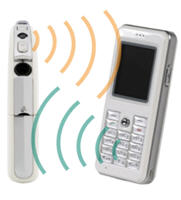
Nucleus 5's AutoPhone feature works across a variety of phone types,
including landline and mobile phones
SMAKA: Chris, earlier in the interview you mentioned improved hearing performance with Nucleus 5 and I can understand how important performance on the telephone is for everyone today. You had also mentioned improved speech recognition. What is that attributed to?
SMITH: Improved speech recognition can be attributed primarily to two things. One is the dual omni microphones that were built into the processor. As you know, dual microphone technology has been shown to improve speech performance in noise. The other is a new signal pathway. It allows us to do things that we had never been able to do with our older microphone technology.
Zoom™ is an algorithm that allows much more focused hearing in very complex listening situations. We've seen improvements of approximately 30 percent when a patient uses their Zoom technology, when compared to not using Zoom. When you compare it to the best situation with a Freedom using Beam technology, it's about a 12 percent improvement. So it's not just a minor improvement. It's significant and it's very much tied to the signal pathway and to the two microphones.
WOLFE: With the subjects that we've tested at Hearts for Hearing, we've seen significant increases in performance even in quiet, on average of about 8 percentage points for their speech recognition of single-syllable words in the test booth. That is very significant because most of these recipients were averaging about 80 percent on those tests to begin with, and as you start to approach the ceiling on difficult tests the opportunity for incremental improvement becomes extremely small. So an eight-percentage-point jump is really big.
As far as a practical day-to-day example goes, we had a patient in the clinic who upgraded to Nucleus 5, and he scored much better in the test booth. He has always had good performance from his Freedom implant, prior to upgrading to the Nucleus 5. But still there were things that were challenging for him. He's legally blind, and so he doesn't have the benefit of being able to lip read at all. He's had to use an assistive listening device for his television. When he could get really close to the TV, he used a specialized caption device with very large print, to be able to follow what was going on.
Since he received the Nucleus 5, he is now able follow what is said over the television just fine without the captioning device. He doesn't use the caption device anymore. He's commented on how many people have said to him, "I don't have to repeat what I say to you now. It's much easier just to converse naturally, like we did before you had hearing loss." He is very active and when he goes to places like basketball games, noisy restaurants or casinos - he enjoys gambling - his performance is great using the Zoom technology. He told me, "These are places where my wife, who has normal hearing, has a difficult time. And I can understand her perfectly in those situations."
SMAKA: So is he winning more, as a result?
[laughter]
WOLFE: You know, the odds are always with the house, so I'm not sure about that.
[laughter]
SMAKA: Jace, thanks for sharing that patient's experience. Improvement in speech recognition is going to be very important to every single patient, but it is especially meaningful to someone who is relying 100 percent on his hearing.
Can you tell me some of the ways that your patients are using the remote assistant? Chris mentioned that parents can use it for their children. I would think even maybe teachers or speech therapists can check the status of the students' implants.
WOLFE: I expected it to be very positively received by families of young children, and it has been. Parents can change the settings on the processor. Or with one push of a button, they can run a diagnostic check on the processor and have peace of mind and confidence that everything's working like it should. That's been a godsend. There's even a troubleshooting menu on the remote assistant, so that if it identifies a problem, it will walk the caregiver or the recipient through a series of steps to identify what the problem is and how it needs to be fixed.
One surprise to me was the reaction from adult recipients using the remote assistant. Several people in our study said up front, "I'm never going to use that. I don't want to keep up with the remote." But then after a couple of weeks, those same people came back and said, "I love the remote. I love being able to check the battery life on my processor";or if they're a bilateral recipient - "I love to be able to change the settings on both ears at the same time, just with one button." So the remote assistant has been well received by patients of all ages.
SMAKA: Excellent. I'm a control freak, so I think I would always have that remote on, checking my system's status at all times, especially when it is new.
WOLFE: I agree. If I had an implant, I would want a remote. A few years ago, Cochlear sent engineers to us at Hearts for Hearing, to seek input from both clinicians from some of our recipients, about what we wanted to see in a new cochlear implant system. And that was one thing that I really lobbied for, a remote control. To now have it in Nucleus 5, and to see how beneficial it's been for patients of all ages, has been great.
SMAKA: I want to switch gears and talk about cosmetics, as you mentioned earlier that Nucleus 5 is smaller and lighter than other processors. What have your patients had to say about the difference in the size and look of the Nucleus 5?
WOLFE: They love it. And the advantages kind of vary by age. For younger children - a ten-month-old or a one-year-old - the smaller and lighter size of Nucleus 5 can make the difference between it staying on his or her ear. We have several children that started out with the previous generation processor, and they had a hard time keeping it on their ear as it would repeatedly fall off during the day. They had to use Snugfit devices or even rubber bands to tie it into their hair to allow it to stay put. We upgraded these children to the Nucleus 5 processor, and now they don't use any kind of retention device. It stays on throughout the day. What a difference that makes for the child, and what a relief for the parents!
Exclusive sound processor covers gives recipients an opportunity
to express themselves
School-aged children think Nucleus 5 looks cool. They think it looks high tech, like a Bluetooth device or an mp3 player, so they're thrilled with it. The immediate impression of the adults who used it in a study we conducted was how light the Nucleus 5 processor is.
Carolyn, I wanted to point out one thing Cochlear did that was really interesting in the development of Nucleus 5. Engineers typically worry about performance;they're not concerned with how a product looks or how it feels or the comfort or anything like that. But, in developing Nucleus 5, the engineers at Cochlear consulted with a human design company that made things like ergonomic keyboards that prevent carpal tunnel syndrome and chairs with better back support. Cochlear's engineers explained what the processor had to do, and said, "Now you make one that's as small as possible and will stay on the ear as well as possible." So this human design company came up with a processor that conforms to the shape of the ear like none other. And, somehow they designed this processor so that it really works well for both adults and children.
One of our patients said it was embarrassing at aerobics class because when she would really get into the class;her old processor would fall off. She wouldn't be able to hear, and she'd have to stop, bend over and pick it up. As you can imagine, this would interfere with her keeping up with the class and she found it to be just frustrating and embarrassing. We upgraded her to the Nucleus 5, and she doesn't have that problem at all now.
From a practical standpoint the new design has solved these types of patient problems with older processors. And, just from a size standpoint, it looks better aesthetically, which important to recipients and their family members. It's also more comfortable.
SMITH: Jace brings up a great point. While Nucleus 5 is about a third smaller than our previous devices, it really is about the comfort, not just about size. In the development, as Jace mentions, it was very important for us to get insight from people such as, "How should we design this new product from a comfort and retention perspective, as opposed to just making it smaller?" That was a big step in the process.
SMAKA: Chris, you mention it's a third smaller than your previous device, but from what I can see by the pictures on your Web site, it looks like the smallest sound processor on the market today.
SMITH: It is the thinnest regardless of battery type, and the smallest one to use rechargeable batteries.
SMAKA: Tell me about the logistics of upgrading. If I'm a patient wearing a Nucleus Freedom, how do I go about upgrading to Nucleus 5?
SMITH: You could jump on our Web site, www.cochlearamericas.com, which would help lead you through the upgrade process. We reached out to all our recipients through a direct mail campaign when Nucleus 5 became available, and at the same time, we also informed our clinics. So recipients can also contact their cochlear implant center, but approximately ninety-nine percent of the recipients actually go directly to Cochlear when they're getting an upgrade.
SMAKA: Thanks for that explanation. That sounds like a really simple process.
When I heard about this upgrade program, I just was stunned that a corporation would make an upgrade like this available to people. What was the reaction from people when you launched this program?
SMITH: I don't think that patients who have our device are surprised that we offer the upgrade, but I think they were surprised that this happened so soon. Never in our industry's history has someone launched a new product and, two months later, launched the upgrade for a group of patients that had received an implant up to five years ago. It usually takes years to get the technology available for upgrade. However, we worked in parallel paths through the development of this technology, knowing that there were so many Freedom recipients out there that could benefit, and it gave us the ability to bring it to market very quickly for those patients.
I think that's one of the reasons that a lot of people choose Cochlear -because of our lifetime commitment to continually provide new technology.
SMAKA: Until now, we've been talking mainly about the Nucleus 5 processor. I'm assuming people who are getting new implants today are being fit with this processor, and is there a new internal implant as well?
SMITH: Yes, there is. We launched the Nucleus 5 as a whole new system, which includes a significantly smaller internal implant- about 40 percent thinner than our previous implant. Today the trend in cochlear implant surgery is to do minimally invasive surgery, so they want to make the smallest incision possible. The ability to make the smallest, thinnest implant became key. From a technology standpoint, Nucleus 5 was very unique to the industry because it took an existing implant and almost cut the size in half from a depth perspective.
So, with Nucleus 5, we have a full new system, which includes the remote assistant, the implant, and the processor.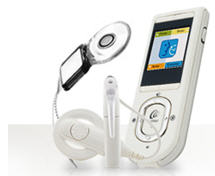
Nucleus 5 implant, sound processor and remote assistant
SMAKA: With the trend toward bilateral implantation, if someone was already implanted several years ago with a Freedom and is now getting a Nucleus 5 implant as a second implant on the other side, there's no issue with having two slightly different implants in each ear, correct?
SMITH: Not at all. As a matter of fact, we've even seen some people who have other manufacturers' devices on one side get a Nucleus 5 on the other. So whether it's the same manufacturer, different models, or different manufacturers, it doesn't make a big difference. There are still only a small percentage of people that are bilateral, although bilateral implantation is growing at a very, very rapid rate
SMAKA: Great. I just had one more question. I know that music listening is an area the whole industry has been looking to improve for people who use amplification. Does Nucleus 5 offer any additional benefit regarding music listening?
WOLFE: Yes. Number one, Nucleus 5 has a program that's specific for music. So if the patient's going to hook up to an mp3 player or listen to live music, for example, he or she can switch to that program. We've received really positive feedback from our patients on that so far about how it improves music listening. Also, the improved calibration of the microphones provides a better frequency response for this processor. Patients have commented that they feel like music sounds more natural, and I think it's probably attributed to that.
SMAKA: Thanks, Jace and Chris, for talking with me today about Nucleus 5.
WOLFE: Thank you so much. It was my pleasure.
SMITH: Thanks, Carolyn, for the opportunity to talk with you about Nucleus 5. And I would like to thank Jace as well. At Cochlear, we couldn't do what we do without having great clinicians and researchers like Jace who partner with us to move the technology forward. It's a privilege working with him and having him with us today.
For more information about Nucleus 5, please visit www.cochlear.com or the Cochlear web channel on Audiology Online.



